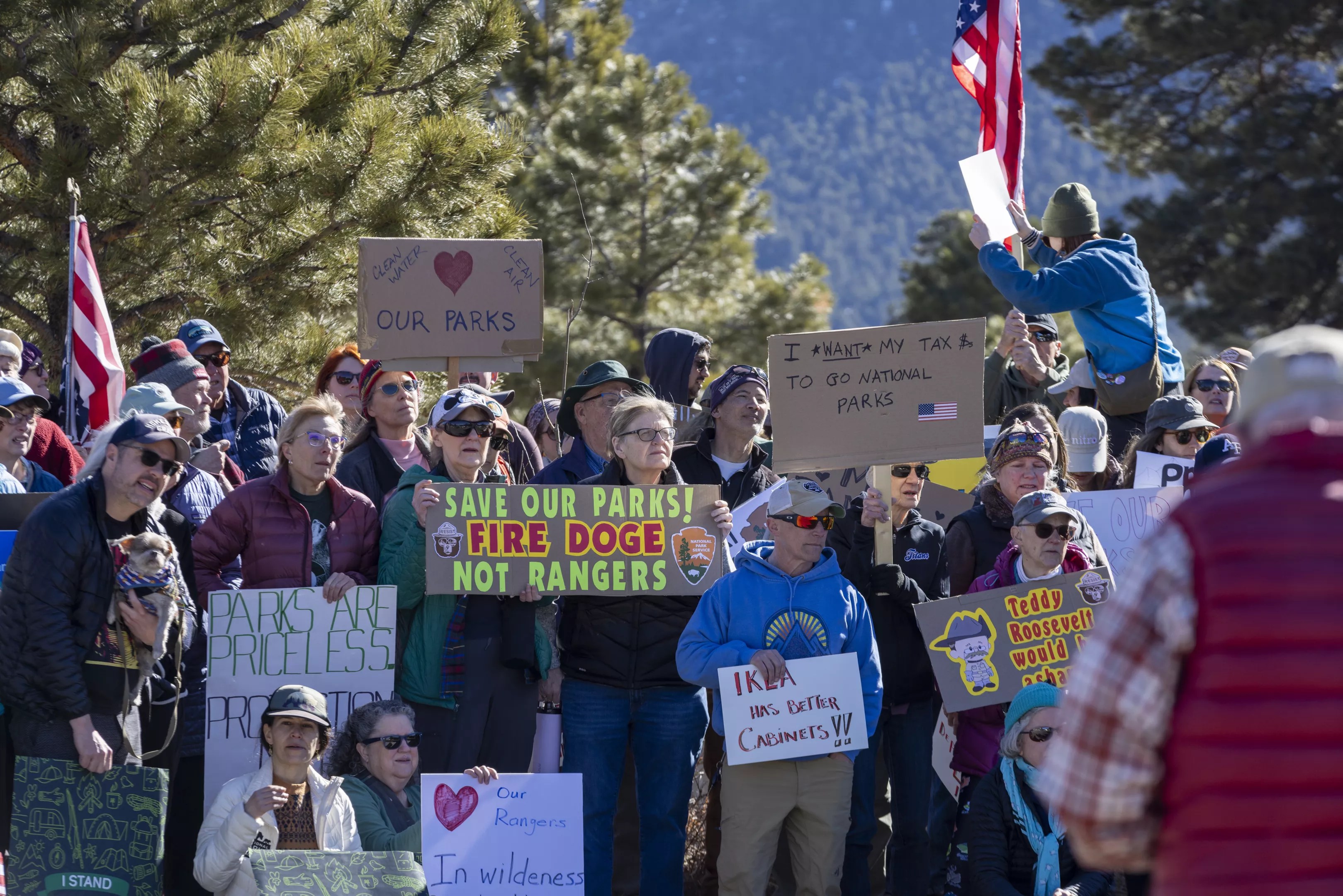
Photo provided by the public via Resistance Rangers

Audio By Carbonatix
At least 52 of the 1,000 National Park Service employees abruptly fired by the Trump administration last month worked in Colorado, according to an unofficial tally crowdsourced by park rangers throughout the country.
That includes twelve employees terminated from Rocky Mountain National Park, among the most losses for any national park recorded in the tally. The hardest hit national parks were Everglades in Florida (fifteen fired), Shenandoah in Virginia (fifteen), Carlsbad Caverns in New Mexico (fourteen) and Great Smoky Mountains in North Carolina and Tennessee (twelve).
Colorado’s other three national parks experienced fewer cuts. Based on the rangers’ count, Black Canyon of the Gunnison lost nine employees, while the Great Sand Dunes and Mesa Verde both lost two.
Another 21 workers were reportedly fired from the park service’s Lakewood-based offices; eleven from the Intermountain Regional Office, nine from the Denver Service Center and one from the Geologic Resources Division. Two employees were terminated from the Climate Change Response Program based in Fort Collins.
Will you step up to support Westword this year?
At Westword, we’re small and scrappy — and we make the most of every dollar from our supporters. Right now, we’re $20,000 away from reaching our December 31 goal of $50,000. If you’ve ever learned something new, stayed informed, or felt more connected because of Westword, now’s the time to give back.
The following Colorado sites under National Park Service control had one termination each: the Amache National Historic Site, Florissant Fossil Beds National Monument, Sand Creek Massacre National Historic Site, and Rocky Mountain Inventory and Monitoring Network.
The real number of Coloradans impacted by the firings is likely higher than the 52 identified.
The tally comes from a group called Resistance Rangers, consisting of around 700 off-duty park rangers, some of whom were let go in the mass firing event. They’ve placed 755 terminations as of March 5, while there were more than 1,000 total (though at least fifty positions were later restored). It also doesn’t account for the 700 park employees who took buyouts and resigned effective this week.
The tally reports employee losses at the Colorado National Monument as “unknown.” Other terminations could have occurred in Colorado but do not specify which location the fired employees worked in, such as the two workers fired from the Natural Sounds and Night Skies Division, which is headquartered in Fort Collins but has other locations throughout the country.
Westword‘s attempts to confirm the number of terminations with each individual site were forwarded to the National Park Service Office of Communications. The office did not respond.
More layoffs could be on the way for Colorado-based employees. The National Parks Conservation Association warns that the Trump administration is planning to terminate National Park Service leases for 34 offices throughout the country, including the Fort Collins headquarters of the Natural Resource Stewardship and Science Directorate, which the association says has more than one hundred employees.
An archived government webpage shows federally-owned buildings flagged for disposal by the U.S. General Services Administration due to being “not core to government operations.” The now-removed list includes the Denver Federal Center Building 50 in Lakewood, which houses the National Park Service’s Denver Service Center, the Intermountain Regional Office and the Geologic Resources Division.
What Does This Mean for National Parks?
The cuts are part of President Donald Trump’s effort to dramatically decrease government spending with his newly-formed Department of Government Efficiency led by Elon Musk. In the month after Trump took office, more than 200,000 federal jobs were eliminated at over a dozen agencies.
The park service has struggled with declining employment for years, but the overnight purge of 1,000 employees is equivalent to the total drop in workers over the past decade.
Experts warn that the reduced staffing may result in less maintenance of public lands, long lines, dirty or closed bathrooms, and fewer or no education and enrichment from park staff like guided tours, trail recommendations and interpretation services.
“The loss is crushing. Parks were already suffering,” Tracy Coppola, Colorado senior program manager of the National Parks Conservation Association, told Westword in February.
The operations at Florissant Fossil Beds National Monument have already been impacted. The Teller County-based monument is now closed on Mondays and Tuesdays due to “a lack of staffing,” as announced on its Facebook page on February 20, six days after the mass firings.
Florissant Fossil Beds lost just one employee, according to the unofficial count, but it only had ten full-time employees as of fiscal year 2023. Coppola said even one firing is enough to make or break countless smaller monuments and historic sites throughout the country.
“The impacts of this are so wide and so devastating,” Coppola said. “It will be very visceral, the impact of decreased staff. I don’t think you will have to be a park expert to see it firsthand. It will be really apparent.”
Rocky Mountain National Park had 253 full-time employees as of fiscal year 2023, meaning the twelve loses represent around five percent of its workforce. In 2023, Rocky Mountain National Park was the fifth most visited park in the country, attracting over 4.1 million visitors.
When asked to comment on the firings in February, the National Park Service Office of Communications issued the following statement: “The National Park Service is hiring seasonal workers to continue enhancing the visitor experience as we embrace new opportunities for optimization and innovation in workforce management. We are focused on ensuring that every visitor has the chance to explore and connect with the incredible, iconic spaces of our national parks.”